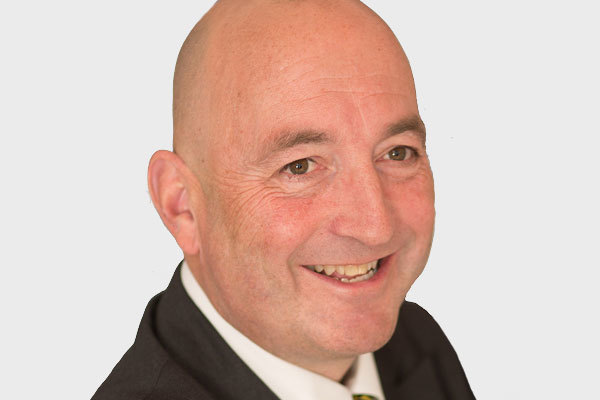You are viewing 1 of your 1 free articles
 Jules Birch
Jules BirchHow hard is it to rehome Grenfell victims?
Jules Birch examines options open to the council in rehoming survivors locally
 Jules Birch
Jules BirchHow difficult should it be for Kensington and Chelsea to find new permanent homes for the families made homeless by the Grenfell Tower fire?
A month on from the disaster, new council leader Elizabeth Campbell promised on the Today programme this morning (listen from around 2:10:00) to build new council homes and buy existing ones.
So far 68 social rented homes have been reserved for the families at a new development in Kensington but they were always going to be affordable housing anyway, built under a Section 106 agreement and bought by the City of London Corporation.
Only 14 out of the 158 Grenfell families currently living in hotels have accepted offers of temporary accommodation as they wait for permanent homes.
Ms Campbell, who is also the new cabinet member for housing and regeneration, gave a contrite but awkward interview in which she claimed (wrongly) that the royal borough would be the first in London to build new council homes and admitted (eventually) that she has never been inside one of the council’s tower blocks.
However, she did at least perform better than her predecessor as leader, Nick Paget-Brown, and another Tory councillor, Catherine Faulks, who made an embarrassing appearance on the same programme last week.
Asked whether the council, the richest in London, would be spending any of its £274m of reserves to rehouse the families, Ms Campbell replied: “Yes we are. I make this guarantee: that we are going to be the first council in London who are going to build new council homes.”
This will come as something of a surprise to all the other London local authorities that are already building homes but it is still a step in the right direction.
Ms Campbell made the point that deeply traumatised people were not necessarily ready to make choices about their future housing.
But pressed on how much of the £274m she was prepared to use for new homes for the survivors, she went on: “We will definitely put stuff towards it because we have saved for emergency situations and this is [one]. We have got to see what our liabilities are; we might have huge liabilities going forward but I am prepared to make the commitment that we are going to build council houses, we will put our reserves towards building council houses, we will be asking the government to contribute to building more council houses and we will be working with the private sector.”
Asked whether the council would also buy existing homes that are already on the market, Ms Campbell eventually committed to that as well, but refused to say how much of it would come out of the reserves.
Kensington and Chelsea Council does have previous experience of buying homes for its homeless families – but outside the borough. Two years ago it was planning to spend £10m on 39 properties in outer London and beyond, arguing that homes inside the borough were too expensive.
However, at the same time neighbouring Westminster was spending £20m to buy back former council houses inside the borough that had been sold under the Right to Buy.
In total it spent more than £90m on 295 ex-council houses. At the time, the purchases made headlines because the council paid up to 22 times what it had sold the homes for in the first place but it does show what could be possible even in Kensington and Chelsea.
A quick look at Rightmove’s listings for north Kensington reveals dozens of former council flats for sale as well as flats in new developments.
With one-bedroom flats costing £300,000, two-beds around £500,000 and three-beds up to £800,000, they will not come cheap.
However, £100m from Kensington and Chelsea’s reserves should still be enough to buy perhaps 200 flats, especially if the government did its bit by waiving stamp duty on the purchases and formally abandoning its plans for forced sales of high-value council houses.
I’m not claiming that this is the answer – many of the flats are in tower blocks that people will be reluctant to accept, there will be inevitable financial and legal complexities and I’m sure there are better ways of spending public money – but it does at least show what is feasible.
“£100m from Kensington and Chelsea’s reserves should still be enough to buy perhaps 200 flats.”
If all else fails, perhaps Ms Campbell could ask Ms Faulks for some help? In her day job as a buyer’s agent for local firm Vivien Thompson Property Search she is credited with “a flair for spotting the potential in any property, and the experience to give unbiased advice”.
And the firm’s marketing blurb on its website seems tailored to wealthy clients like the Royal Borough of Kensington and Chelsea.
It says: “You may not have the time or local knowledge to find the property you want and internet searches without background information can be time-consuming and unproductive. Every day we are networking in the London market on your behalf and are able to get you to the best properties first, often before they have come on the market.”
In the longer term, a better and less facetious answer would be for the council and the government to commit to rehousing the families at the same time as they increase rather than reduce the supply of social rented housing in the borough.
Without both parts of that equation, other families will spend even longer in temporary accommodation or on the waiting list for homes.
That could mean extra resources for building new homes and buying existing ones, setting up a housing company, scaling back land sales and saving existing estates that are under threat from regeneration.
However, that would take a complete change of mindset in the council and in government. Ms Campbell’s interview suggests some small steps in the right direction, but are they really ready?
Jules Birch, editor, Welsh Housing Quarterly









